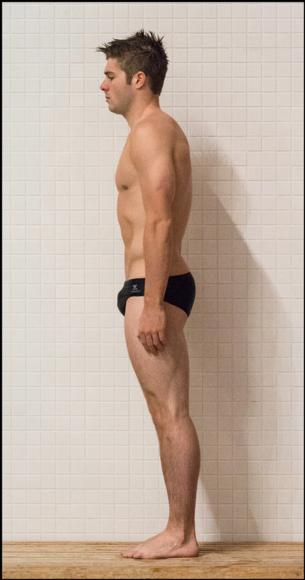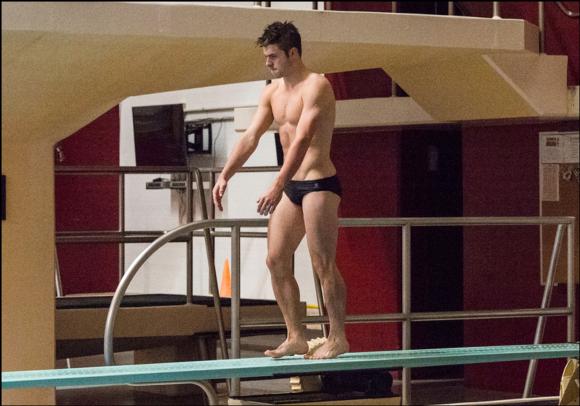The stance and walk
This is an excerpt from Springboard and Platform Diving by Jeff Huber.
Springboard Forward Approach
As mentioned in the preface, former Indiana University and International Hall of Fame diving coach Hobie Billingsley liked to say that the forward approach is the most difficult part of diving. Few coaches and divers would dispute Hobie's claim. As many elite divers will attest, once the forward approach is mastered, the rest of the dive is relatively simple compared to the hurdle. After 37 years of teaching the springboard forward approach, I have discovered that it isn't quite the wicked or wild beast we make it out to be. In fact, once we get to know the critter, it is a fairly easy beast to tame.
The first section of this chapter deconstructs the forward springboard approach by identifying the critical Xs and Os - the five essential positions for what to teach and what to learn. Once they have mastered these positions, divers can perform proficient forward approaches in no time at all. Gaining consistency in the approach, of course, takes more time and more practice, but these five essential positions outlined in the following section will have divers quickly on their way to having an accomplished forward approach.
Before considering the first essential position, let's briefly review two movements that occur before the hurdle: the stance and walk.
Stance and Walk
The stance is the position the diver assumes before taking the first step in the hurdle. It is important for several reasons. First, because it is the initial impression the diver gives the judges, it needs to be a good one. Second, the stance is also important because the diver needs to be in the body alignment that will be used during the walk in the approach. The diver should stand with head neutral, shoulders square but relaxed, feet together, abdomen in, front of torso slightly concave, hips rolled under, arms at the side of the body, and fingers straight. Figure 2.1 depicts the proper stance.

The stance for the springboard forward approach.
The walk constitutes the steps taken toward the end of the board. Diving rules state that a diver must take a minimum of three steps in a forward approach. Although there is no hard-and-fast rule about the maximum number of steps, I have always taught divers to take at least four steps. A walk with four or five steps allows the diver to make a grander impression with the judges and to more easily get in rhythm with the board - and rhythm is important for the forward approach, as we will see. During the walk, the diver's shoulders should be forward over the plane of the toes, angling from the ankles and not the hips. Figure 2.2 shows this position in the walk.

The body position during the walk for the springboard forward approach.
The arm swing, as you might guess, involves moving the arms in synchronization with each step in the walk. The arm swing is easy to syncopate with the steps. If the diver takes five steps, the arms move backward as the first step is taken. If diver takes four steps, the arms move forward as the first step is taken. Many divers and diving coaches overlook the importance of the arm swing, focusing more on what happens at the end of the approach than on what happens at the beginning. Of course, both are important; however, even though the arm swing may seem like a simple and unassuming element of the forward approach, it is more critical than divers and coaches might first think.
The diving board is like a stringed musical instrument with its own vibration and rhythm, and the diver must be in rhythm with the board. The board won't accommodate the diver; the diver must accommodate the board. In other words, the diver's rhythm must match the board's rhythm. At a U.S. national championship, one of my divers had a disastrous event on the 1-meter springboard, pounding the board with every hurdle and finishing in last place. In a late-evening practice, I asked him to focus on swinging his arms and finding more rhythm in his approach. That did the trick. In the next day's event, the 3-meter springboard, he caught the board at its apex with every hurdle and made finals.
Learn more about Springboard and Platform Diving.
More Excerpts From Springboard and Platform DivingSHOP

Get the latest insights with regular newsletters, plus periodic product information and special insider offers.
JOIN NOW


